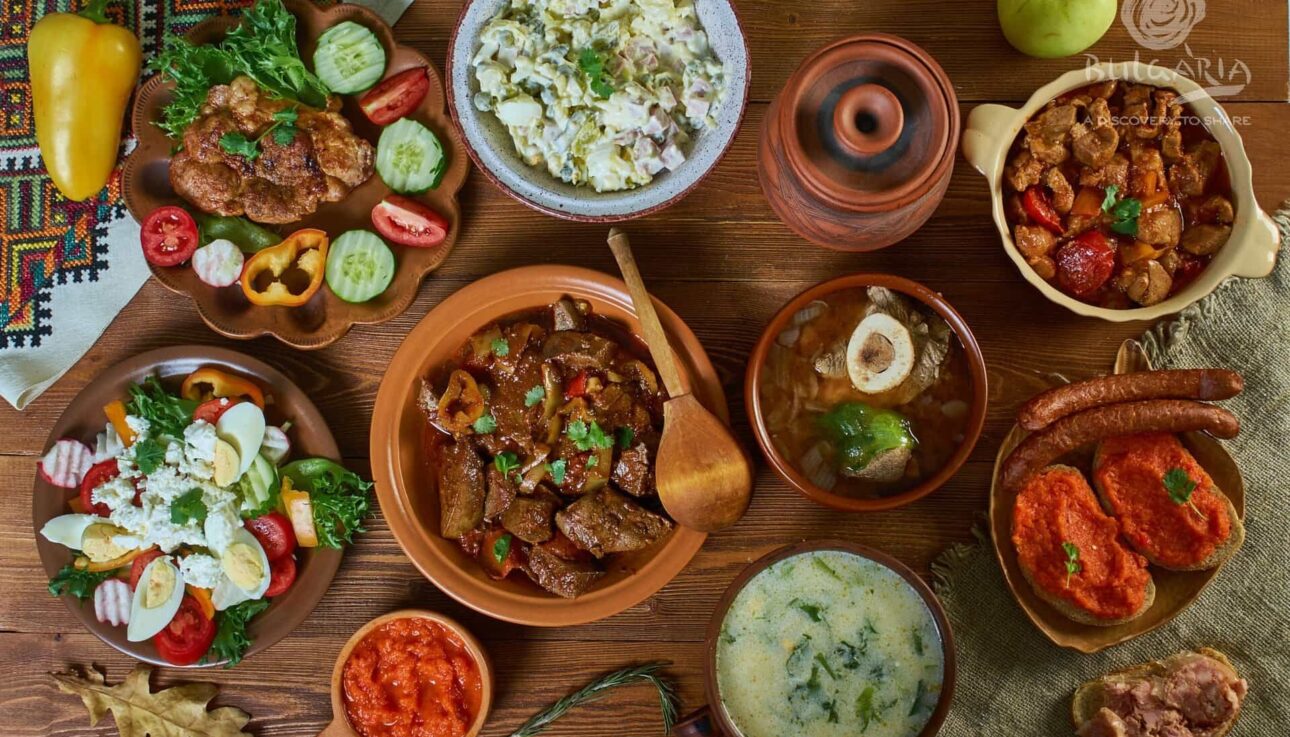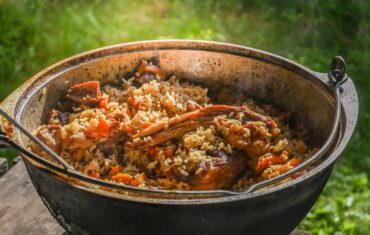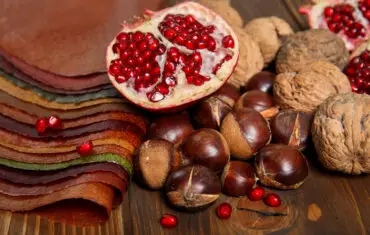A Foodie’s Guide to Bulgarian Cuisine
Foodies will adore Bulgaria, once the ancient Thracian land of the ancient rituals of Dionysius. This fertile land is rich in soil, history and culture. And today, the country boasts a vibrant culinary heritage. This is as deep as its lush valleys and as ancient as its towering mountains. However, just as food is a cornerstone of Bulgarian life, so too is wine, with a viticulture tradition that spans millennia. To understand Bulgarian wine culture and cuisine is to embark on a journey through time. One where every sip of wine and bite of food connects you to the heart of this beautiful country.
The Essence of Bulgarian Wine
Bulgaria’s wine history dates back to Thracian times, over 3,000 years ago. The Thracians, ancient inhabitants of the region, revered wine, believing it to be a divine gift. Today, Bulgaria’s wine regions continue to produce some of the finest wines in the world. The focus is on indigenous grape varieties that offer a true taste of the country’s terroir.
Wine Festival in Bulgaria
Mavrud and Melnik are two of Bulgaria’s most celebrated native grape varieties. Mavrud, a red grape, produces wines that are rich and full-bodied, with notes of dark fruits and spices. Melnik, grown primarily in the southwestern part of the country, yields wines with a distinct character—smooth, with a slightly smoky flavor and a hint of earthiness. These wines, often paired with traditional Bulgarian dishes, create a culinary experience that is both authentic and unforgettable.
The Ritual of Wine and Food
In Bulgaria, wine is much more than just a beverage; it is an integral part of social and cultural life. From family gatherings to festive celebrations, wine plays a central role. During these festivals you can still see the intricate rituals – passed down through generations.
One such tradition is the Trifon Zarezan festival, celebrated on February 14th. Yet while the rest of the world may be exchanging chocolates and roses for Valentine’s Day, Bulgarians instead honor the patron saint of vine growers and wine makers, Trifon Zarezan. In early spring Bulgarians celebrate new life by the pruning of the vines, symbolizing the start of the new vine-growing season. And the Bachanalian feasts of old are evoked by joyeous feasts where wine flows freely, and traditional dishes can be savoured. Therefore, for lovers, who also love wine, this is a great time to visit!
Trifon Zarezan Festival
The Culinary Heritage of Bulgaria
Bulgarian culture cherishes both wine and food. Centuries of recipes passed down through generations can be tasted, each carrying a piece of Bulgaria’s history.
The rich farmlands of ancient Thrace are fertile. Rice, beans and abundant crops grow in the rich soil. Clay pots enhance the flavours.
The cuisine is rich in spices, and fruit and vegetables along with honey and world-famous yogurt and cheese featuring, alongside fresh herbs such as basil, thyme, parsley, oregano and mint.
Banitsa With Cheese
One of the most iconic Bulgarian dishes is Banitsa. Banitsa is a flaky pastry made comprised of layers of filo dough, filled with a mixture of eggs, yogurt, and cheese. Banitsa is traditionally served on special occasions. Also, in some regions, it is customary to place lucky charms or coins inside the pastry. This makes it more than just a dish. It is also a symbol of hope and prosperity for the year to come.
Another beloved dish is Kavarma. Kavarma is a slow-cooked stew made with tender pieces of pork or chicken, simmered with onions, peppers, tomatoes, and a variety of spices. Kavarma is typically cooked in a clay pot, allowing the tantilising flavours to meld together beautifully. Therefore, it is a dish that is both hearty and comforting.
Kavarma
Finally, no meal is complete without a glass of rakia! Rakia is a mellow and traditional Bulgarian brandy often made from grapes or plums. Rakia is more than just a drink; it is a symbol of hospitality and your host will offer you Rakia as a sign of welcome.
Regional Cuisine
The cuisine of the southern Rodopi Region has a very specific taste. You can find Rodopi cusine throughout Bulgaria. However, authentic patatnik or klin potato dishes are tastiest in the Rodopi villages.
The Rodopi cheverme /barbecue/ and the Smilyan beans are other popular local dishes. And in the Rodopi village of Smilyan you can taste many different delicious dishes prepared with the world-famous plump local beans. For example, bean salad, bean soup and breaded beans.
Smilyan Bean Soup
Pirin cuisine in the south west is diverse and deliciously interesting. It utilizes a wide variety of spices. You can best explore this local cuisine in the area of Bansko. Certainly, the cosy taverns of Bansko, and other towns of the Pirin region, are charming, with an old fashioned authentic vibe.
Bankso
Culinary Festivals Through the Year
1. Trifon Zarezan (February 14th)
One of Bulgaria’s oldest and most cherished festivals takes place on February 14th. Dedicated to vine growers and winemakers, Trifon Zarezan is a lively and fun festival. Known as the Day of the Vine Grower, this festival marks the beginning of the vine pruning season. Traditionally, men head to the vineyards, where they prune the vines and sprinkle them with wine to ensure a bountiful harvest. During the celebration there are feasts featuring traditional Bulgarian dishes. Such as grilled meats, cheeses, and, of course, plenty of wine.
2. St. George’s Day (May 6th)
St. George’s Day, known as Gergyovden, is a significant religious and cultural holiday in Bulgaria, often associated with the beginning of spring. In addition it’s a time for celebrating food, particularly lamb, which is the centerpiece of the festive meal. In many villages, locals roast whole lambs on a spit, seasoned with herbs like mint and garlic, and served with fresh salads and breads. Folk music, dancing, and various rituals honour the season of renewal.
3. Banitsa and Sudzhuk Festivals (May)
Also in May are the festivals of Banitsa with folklore and dancing in Banitsa Village. Plus in Gorna Oryahovitsa Town, they have the Sudzhuk Festival in homage to the local dry spicy sausages for which they are famous.
4. Rose Festival in Kazanlak (Late May to Early June)
The Rose Festival in Kazanlak is primarily known for celebrating Bulgaria’s famous rose oil production. However, it also features a variety of culinary delights. Visitors can enjoy dishes infused with rose petals, such as rose jam, rose liqueur, and even rose-flavored desserts. The festival is a sensory feast that combines the beauty of the rose harvest with the unique flavors of Bulgarian cuisine.
Kazanlak Rose Festival
5. Yoghurt Festival in Tran (June)
In the town of Tran one can learn more about yoghurt by visiting the Yoghurt Museum located near (7 km) Tran, in the village of Studen Izvor. Plus, there is also a special annual yoghurt celebration in June. Here, guests can sample genuine homemade yoghurt and dairy products.
6. Cherry Festival in Kyustendil (Late June)
Held annually in the town of Kyustendil, the Cherry Festival celebrates the region’s bountiful cherry harvest. The festival features a variety of cherry-themed events, including cherry picking, cherry pit spitting contests, and exhibitions showcasing the best cherries in the region. The culinary highlight is, of course, the array of dishes made with cherries. These range from sweet cherry pies and jams to savory sauces paired with meats.
Cherry Festival
8. Rila Zelnik Festival (June)
Rila Zelnik is Banitsa (pastry parcels with cabbage). An annual celebration of the zelnik is held in the village of Beli Iskar in the Samokov region. Local culinary masters compete to produce the most delicious zelnik. During the festival, guests can enjoy this interesting type of banitsa, as well as other dishes unique to the Samokov region.
9. Festival of the Bread in Raduil (July)
The Festival of the Bread, held in the village of Raduil, is a tribute to one of Bulgaria’s oldest and most important culinary traditions—bread making. This festival celebrates the art of baking with demonstrations of traditional bread-making techniques, including the kneading and baking of various types of bread. Visitors can taste freshly baked bread, learn about the different grains used in Bulgarian bread, and even try their hand at making their own loaves.
10. Midalidare Rock in the Wine Valley (July)
Midalidare Rock is not just a music festival—it’s a celebration of wine, food, and rock ‘n’ roll in the heart of Bulgaria’s wine country. Held at the Midalidare Estate, this festival combines live rock music with wine tastings, where visitors can sample some of the best wines from the region. The event also features food stalls offering gourmet dishes that pair perfectly with the local wines, making it a must-visit for food and wine lovers.
11. Apricot Festival in Tutrakan (July)
Also in July visitors can visit Tutrakan which celebrates its golden, sweet apricots with tastings of the fruit along with the famous apricot brandy (rakiya).
12. Sea of Wine Festival in Pomorie (August)
The coastal town of Pomorie holds an annual celebration and exhibition dedicated to wine. During the event there is wine tasting and awards are given to the winning wine producer.
13. International Honey Festival in Nessebar (Late August)
Each year the town of Nessebar hosts the International Honey Festival. Here guests can learn more about honey and other bee products, but also includes workshops where honey producers exchange knowledge.
14. Plum Festival in Troyan (end of September)
Troyan Plum Festival is a lively event. Locals celebrate the plum harvest, a fruit that is deeply intertwined with the region’s culinary traditions. The highlight of the festival is the tasting of rakia, a traditional Bulgarian brandy made from plums. In addition you can also enjoy a variety of plum-based dishes. Fore example, plum jam, plum cake, and stews flavored with dried plums. The festival also includes folk music, dancing, and traditional craft exhibitions.
15. Kurban in Perushtitsa (October)
Kurban is a traditional Bulgarian feast, often associated with religious or communal celebrations, where a sacrificial meal is prepared and shared among the community. The Kurban Festival in Perushtitsa is one such event, where locals prepare a communal meal featuring a stew made from lamb or other meats, slow-cooked with vegetables and spices. The festival is a time of giving thanks, and the food is often blessed before being served to the community.
16. Potato Festival in Klisura (October)
The town of Klisura houses the only Potato Museum in the country. The locals celebrate the wonders of the humble spud at the Festival of the Potato in October. During the event a visitor can try many potato dishes as well as an exciting folklore program.
17. National Festival of Traditional Bulgarian Cuisine in Smilyan (November)
In November the Rhodope village of Smilyan, holds a Festival to traditional Bulgarian cuisine, with a special focus on the world-famous Smilyan beans. The festival features cooking demonstrations, tastings, and competitions where local chefs showcase their best bean dishes, from hearty stews to savory pies. It’s a celebration of the rich culinary heritage of the Rhodope Mountains, where visitors can experience the warmth and hospitality of Bulgarian village life.
18. Sour Cabbage Festival in Haratanovo (November)
The Sour Cabbage Festival, held in the village of Haratanovo, is a unique celebration of one of Bulgaria’s most beloved fermented foods—sour cabbage. This festival features a variety of dishes made with sour cabbage, such as sarmi (cabbage rolls stuffed with rice and meat) and kapama (a slow-cooked dish with layers of meat, sausage, and cabbage). The festival also includes demonstrations of the fermentation process, folk music, and dancing.
19. Nikuldens Feast (December 6th)
Nikuldens, or St. Nicholas Day, is a major holiday in Bulgaria, particularly for those living near the sea. St. Nicholas is considered the patron saint of fishermen, and on this day, Bulgarians traditionally prepare fish dishes, most notably ribnik—a fish baked in dough. The holiday feast is a time for families to gather and enjoy a meal that often includes carp, prepared in various ways, along with an assortment of salads, breads, and desserts.
20. Kapama Festival in Bansko (December)
Kapama is a traditional Bulgarian dish that is especially popular during the winter months, and the Kapama Festival in Bansko celebrates this hearty meal. This is a slow-cooked dish made with layers of meat, including pork, veal, and sausage, along with sauerkraut and rice, all seasoned with spices and cooked in a clay pot. The festival in Bansko offers visitors the chance to taste different variations of kapama, often accompanied by local wines and rakia, all while enjoying traditional Bulgarian music and dance.
A Taste of the Past, A Toast to the Future
Bulgarian cuisine and wine culture are deeply rooted in the past, yet they continue to evolve, blending ancient traditions with modern influences. Whether you are enjoying a glass of Mavrud with a plate of Banitsa, or sipping on rakia while savouring a bowl of Kavarma, you are participating in a culinary tradition that has been cherished for generations.
A tailor made tour of Bulgaria allows you to fully explore both the culture along with the rich flavours of Bulgarian wine and food. On such a journey you are not just tasting a dish or a drink—you are experiencing the soul of Bulgaria, a country where every meal is a celebration of life, history, and the joy of togetherness. So raise a glass, take a bite, and savor the magic of Bulgaria, where the past and present come together in every delicious moment.



